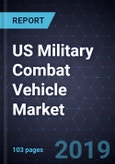The US Army is Investing Heavily to Enhance its Current Combat Vehicle (CV) Fleet While also Developing Next-generation Vehicles
Combat vehicles (CVs) are essential for joint combined arms operations, operations that integrate infantry, armor, artillery, engineers, aviation, and joint capabilities. CVs have proven their value in all types of terrain and tactical environments from open deserts to mountains, jungles, and cities. CVs provide general capabilities - including networked communications, load carrying, and power generation - to soldiers that enhance their ability to fight. They also fulfill roles essential to seizing, retaining, and exploiting the initiative in battle. These include close combat, reconnaissance, protected soldier and leader transportation, indirect fire, route clearance, obstacle reduction, mission command and communications, medical evacuation, maintenance, and sustainment.
Technology upgrades and modernization initiatives are key elements by which the US Army combat bases its strategy to support the continuous adaptation of the current fleet and innovation to develop future capabilities. The Army must sustain existing fleets and improve existing vehicles as science and technology produce new capabilities used to develop new vehicles capable of meeting emerging requirements.
Investments in CVs are critical to mission success and reducing risk. As the US Army becomes smaller, CVs play an increasingly significant role. The Army’s investment strategy establishes the goals for CV modernization in line with emerging threats. It guides the Army’s programming and budgeting activities and provides the vision for future CV development.
This research provides an overview of the US military CV market. Military CVs are the ground vehicles used to transport, support, and carry out offensive/defensive operations on the battlefield by ground troops. This study also provides information about the spending on the various vehicles utilized by military services in the United States, and how the country is investing to modernize and upgrade these vehicles.
Spending data is based specifically on the most current defense budget request for the fiscal year 2020. Market segmentation is also based on the 2020 budget using 2018 as the base year in order to coincide with defense contracts awarded during that year.
All years referenced within this research effort are based on the US fiscal year calendar. The base year used for the analysis is 2018 because it is the most recent complete year of awarded contracts to provide a viable competitive analysis.
It includes spending on the following segments:
- Armored Fighting Vehicles
- Armored Personnel Carriers
- Family of Heavy Tactical Vehicles
- Joint Light Tactical Vehicle
- Tactical and Support Vehicles
- Modification Programs
- Technology Upgrades
Some detailed spending on CV sensors, weaponry, and communications are not publicly released due to their sensitive nature. Therefore, the publisher assumes the forecasts are somewhat less than what will actually be spent through the research period.
Key Issues Addressed
Some questions this research will address include the following:
- Who are the top combat vehicle competitors and how have they reached the leading positions within the market?
- What are some significant trends within the market that competitors need to be aware of in order to ensure continued success?
- What factors are driving or restraining market growth?
- How much is the Department of Defense (DoD) investing in the CV market and which segments show the greatest opportunities for growth?
- What are the critical success factors that market competitors should consider in order to capitalize on growth opportunities?








